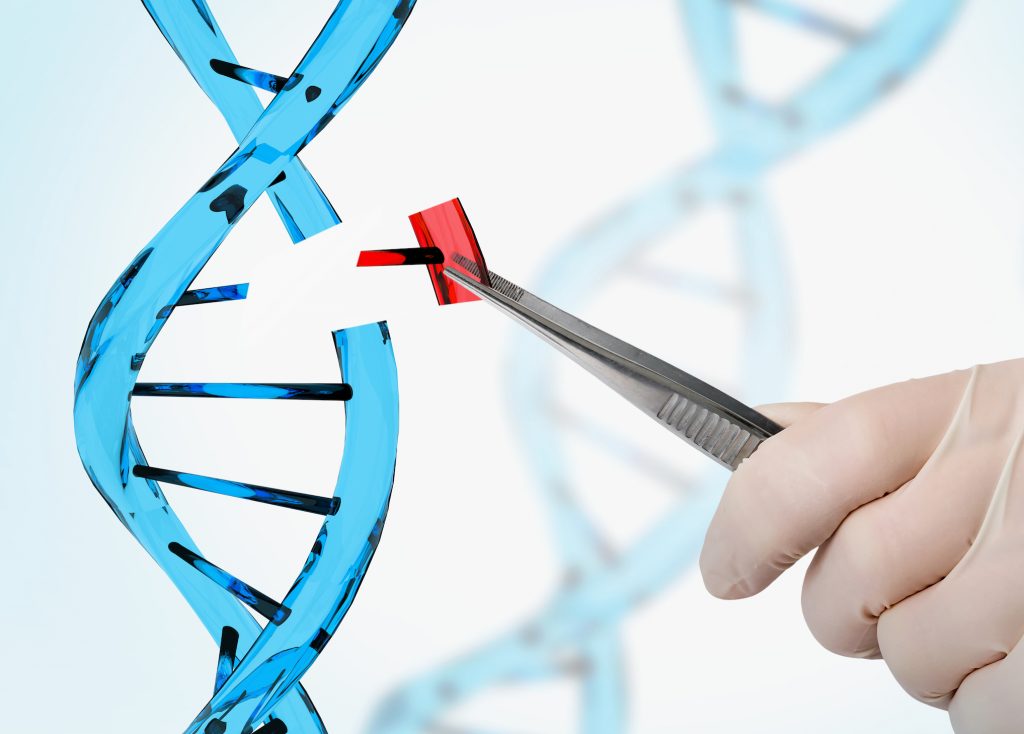Every seat full. Students perched on the aisle stairs and lining the back walls.
What topic could possibly pull so many away from their final exams? Not “How to Stop Procrastinating” nor “How to Pass Life After Failing Your Exams” but rather “Gene-Editing Human Embryos: Unpacking the Current Controversy” on the Duke campus.
Since Chinese researcher He Jiankui announced at the Second International Summit on Human Genome Editing in Hong Kong that he made the world’s first genetically engineered babies, a debate on the ethical implications has raged on social media.
On December 6, the University Program in Genetics and Genomics and the Molecular Genetics and Microbiology department co-hosted a panel responding to He’s claims. Charles A. Gersbach from the Biomedical Engineering department lead the discussion of what exactly happened and then joined the panel which also contained Misha Angrist, a senior fellow in the Science & Society initiative; Heidi Cope, a genetic counselor; Giny Fouda, an assistant professor in pediatrics; and Vandana Shashi, a genetic counselor.
/cdn.vox-cdn.com/uploads/chorus_image/image/62603270/AP_18332234595077.0.jpg)
But what exactly has He potentially done to these twin girls? Can they fly? Breathe underwater? Photosynthesize? Not exactly. He said he deleted a gene called CCR5 to increase their HIV resistance. Two percent of Northern Europeans naturally have a mutation that removes the CCR5 gene from their DNA and as a result do not display any traits other than increased HIV resistance.
Many researchers have explored blocking CCR5 activity as a potential HIV treatment. Using CRISPR-Cas9, a genetic engineering technology that can cut and paste specific sequences in the DNA, He targeted CCR5 during in vitro fertilization. According to his tests, he successfully removed both copies of the CCR5 gene in one of the girls. However, in the other girl, the CCR5 remained normal on one chromosome and on the other, CRISPR had deleted more than intended. The effects of that additional deletion are unknown.
Both the girls are mosaics, meaning the genetic change occurred in some of their cells and not in others, leading to still more uncertainties.
Researchers have conducted genetic engineering experiments on both somatic cells and human embryo cells that were never brought to term. (Somatic cells constitute all parts of the body other than the eggs and sperm.) But because He altered the twin girls as embryos and then they grew to full term, their children could inherit these changes. This alters their family line, not just a single individual, increasing the ethical implications.
According to Shashi, He’s experiment becomes difficult to justify. Additionally, embryos have not consented to these changes in their genetics, unlike a patient undergoing genetic therapy.
Many doctors, scientists, and journalists have also questioned He’s lack of transparency because he hid this work until his grand announcement, which caused China to arrest him. In addition, as Cope explained, “it is not typically the PI who does the informed consent process” as He did with these parents.
While He defends his work by saying that the girls’ father carries HIV and wished to increase the girls’ safety, the twins were not actually at great risk for HIV. Their father’s medical history does not increase their chances of contracting the virus, and the overall risk for HIV in China is low. As Fouda emphasized in the panel, “there was no justification for this experiment.” While He discussed the potential for genetic engineering to help society, for these two individuals, no medical need existed, and that increases the ethical dilemma.
A final concern of researchers is the current inability to ensure technical competency and accuracy. As seen by the additional deletion in one of the girls, CRISPR-Cas9 still makes errors. Thus using it to alter not only a human being but all of that individual’s progeny would demand a much higher standard, something close to a life-or-death scenario.

But, the panelists also noted, if it hadn’t been He, it would have been somebody else. Perhaps somebody else may have done it more ethically with more transparency and a more traditional consent process, Angrist said.
While He’s claims have yet to be proven, the fact that they could reasonably be true has many concerned. The World Health Organization has announced that they will begin greater oversight of genetic engineering of the human germline.
On campus over the last weeks, I’ve heard mixed reviews on He’s work with some joking about future superhero babies while others have reacted with fear. The technology does live among us; however, the world is working on writing the guidebook and unrolling the yellow tape.
Post by Lydia Goff

